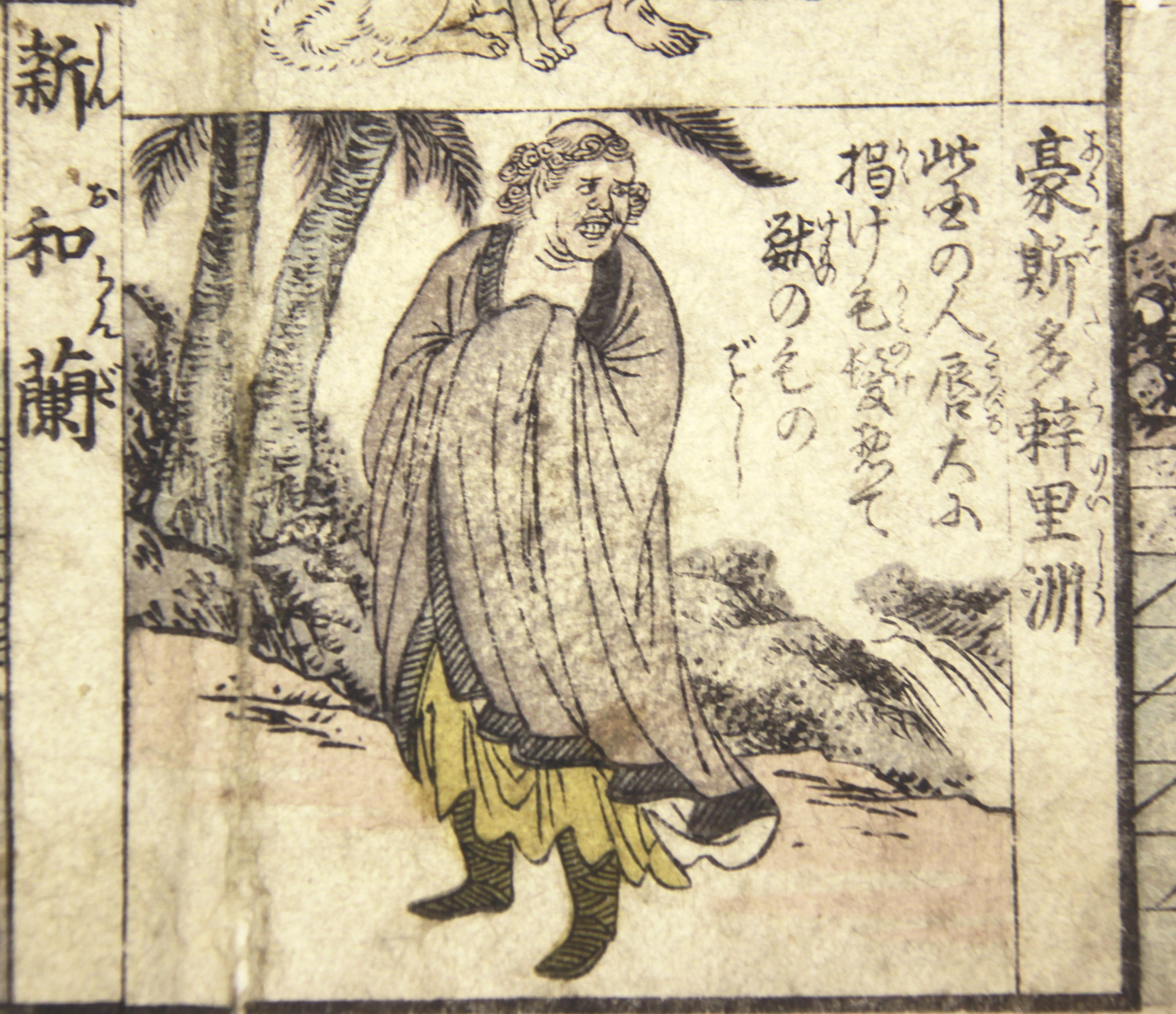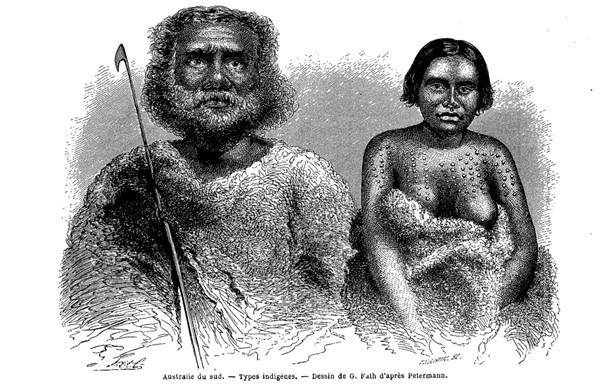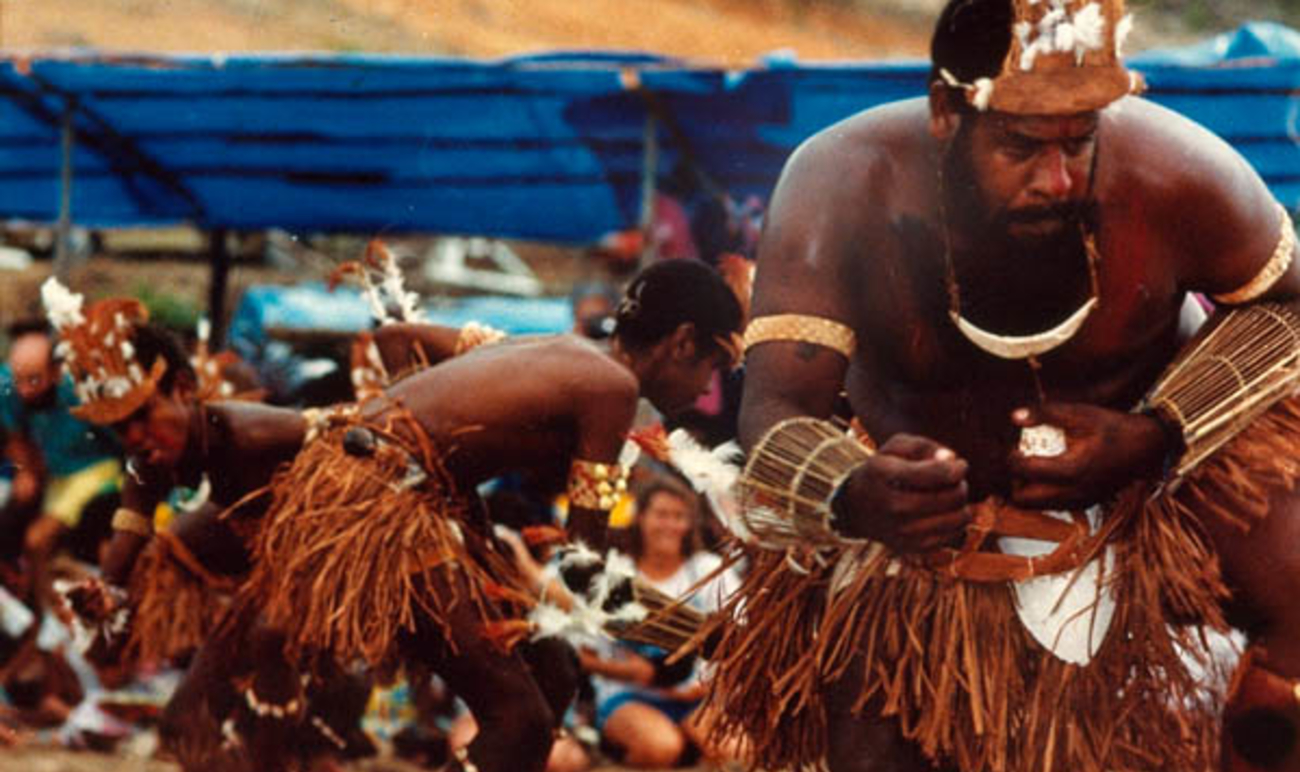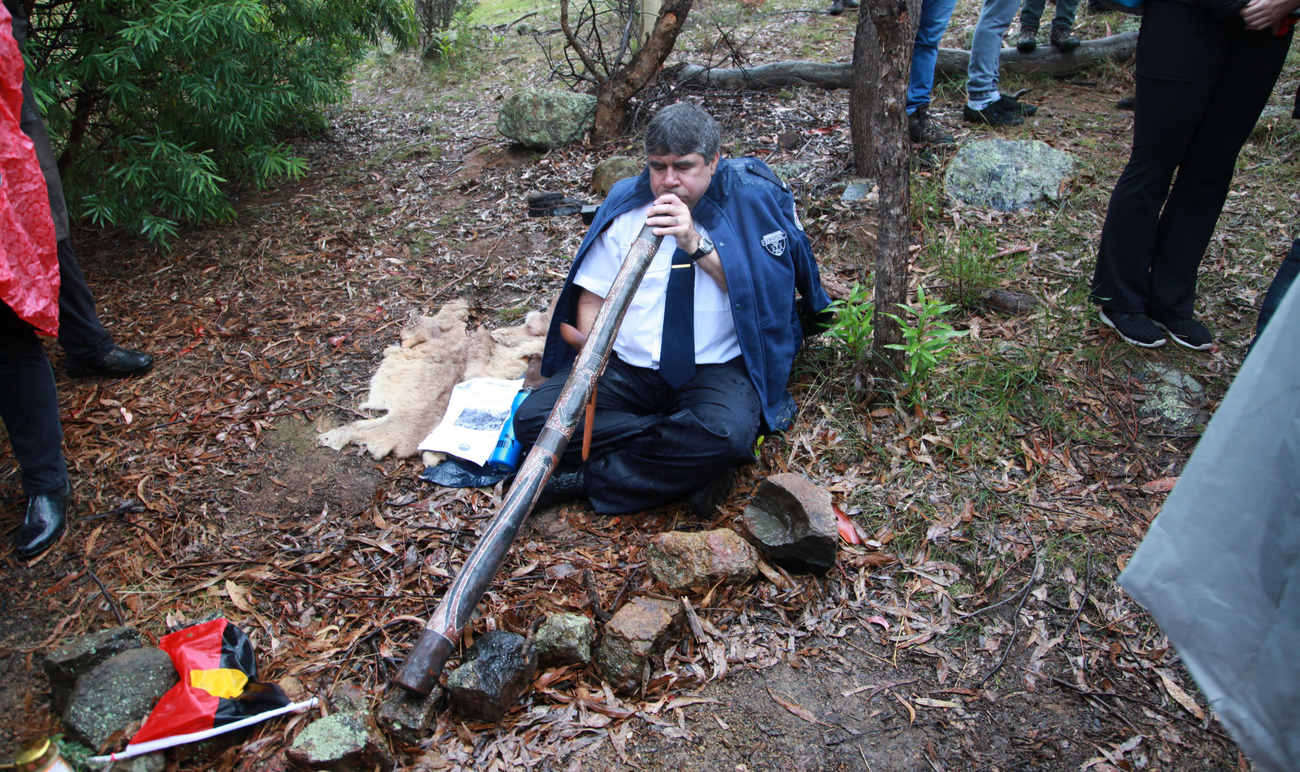The following may include references to material with offensive and/or hurtful language. These reflect the language of the time and such use is not condoned by AIATSIS.
Among several items of Japanese origin held in the AIATSIS Collection are two from the 19th century:
- Ikoku jinbutsu sugoroku (Sugoroku with the Peoples of Foreign Lands), circa 1860
- Yochi shiryaku, Volume 12, Australia and the Pacific compiled by Masao Uchida, published in 1880.
Both items derive from a period when Japan was transitioning from the end of the shogunate (Tokugawa Shogunate, also known as the Edo Period, 1600–1868) to the beginning of Imperial Government (1868–1912, Meiji Period). This was marked by internal turmoil that impacted Japan’s social structure, economy, military, and foreign relations. In 1854 Japan reopened its ports to foreigners and trade and Japanese people started travelling abroad.
With an outward looking Japan came the birth of modern Japanese geography (1850s to early 1900s) and a yearning to learn about the world beyond Japan. It is within this context that Ikoku jinbutsu sugoroku and Yochi shiryaku were produced.
Ikoku jinbutsu sugoroku (Sugoroku with the peoples of foreign lands) circa 1860
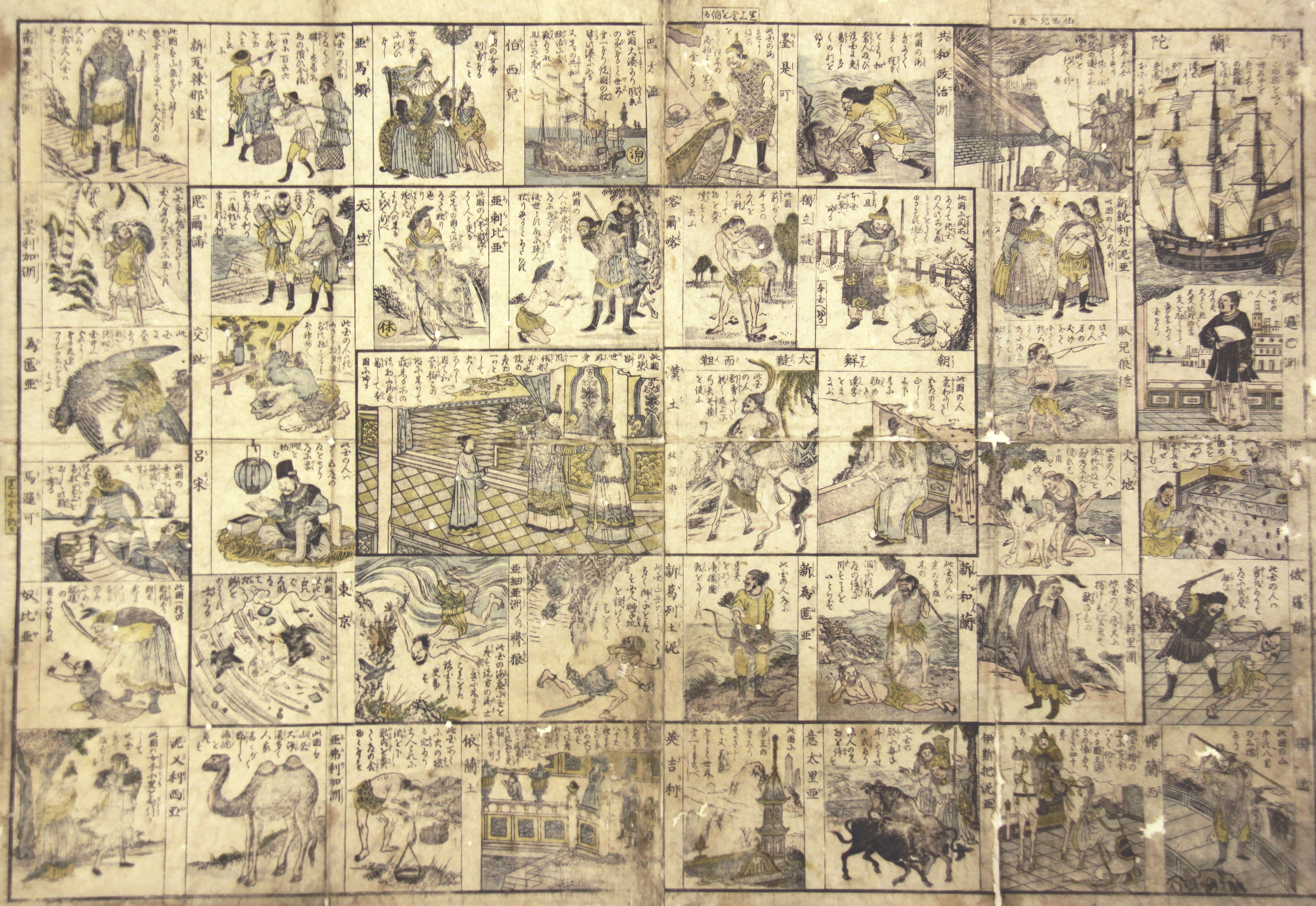
Sugoroku with the peoples of foreign lands is a colour woodblock (木版画, mokuhanga) print on mulberry paper that is approximately 50cm x 73cm. Sugoroku is a traditional Japanese children’s dice-based board game.
Sugoroku with the peoples of foreign lands is a colour woodblock (木版画, mokuhanga) print on mulberry paper that is approximately 50cm x 73cm. Sugoroku is a traditional Japanese children’s dice-based board game.
The sugoroku board game in the AIATSIS Collection consists of 42 panels depicting different people from around the world. Players get to learn about the people of these ‘foreign lands’ as they make their way around the board. The starting point is the ship on the top right-hand side with the finishing point being in the centre of the board back in Japan.
This item was produced in 1860, only six years after Japan’s opening to the world and hence very few Japanese people at that time would have known who was depicted in this game. The images and text in the game are highly stylised and reinforce stereotypes of the time.
The representation of the Australian Aboriginal man (see below) is outlandish in both its visual and textual depiction. The text translates as: ‘the people of this country have big lips and the hair that resembles the fur of wild animals’ — the latter possibly a reference to the wearing of possum skin cloaks. As these are used in cold regions of Australia one would not expect to find possum skin cloaks alongside coconut trees as depicted in the image. The hair and sandals suggest a Japanese aesthetic imposed on the image.
Yochi shiryaku, Volume 12, Australia and the Pacific 1880
A second item from 19th century Japan in the AIATSIS Collection is Yochi shiryaku, Volume 12, Australia and the Pacific, compiled by Masao Uchida and published in 1880.
This is one of 13 volumes published as a geographical encyclopaedia of the world and the first ever published in Japan. The volumes were compiled by Masao Uchida in the 1870s during his retirement from formal work. The last four, including volume 12, were published after Uchida’s death in 1876.
The geographical encyclopaedia was a bestseller in Japan when published and it was distributed to every school in Japan.
Masao Uchida (1839–76) was a Japanese scholar of Western cultures, a bureaucrat and a military officer.
In 1857 Masao Uchida studied under sub-Lieutenant Willem Huyssen van Kattendijke at the Nagasaki Naval Training Centre where he was exposed to the teachings of modern naval science — including navigation, geography, languages, and shiphandling. In 1862 he furthered his studies in the Netherlands.
When Uchida returned to Japan he brought back a large collection of photographs, oil paintings and books and it was from these that he compiled the vision of the world presented in Yochi Shiryaku.
A major source for Yochi Shiryaku was the French weekly travel journal Le Tour du Monde, Nouveau Journal des Voyages published by Édouard Charton from the 1860s and sold through railway stations and bookstores in France.
Le Tour du Monde was aimed at a popular readership and reproduced images from other sources, mostly explorer diaries and popular travel texts as woodcuts. It reproduced several images of Australia from Edward Wilson’s Rambles Through the Antipodes, which are then subsequently reproduced in Yochi Shiryaku.
At present, Yochi Shiryaku has not been translated into English and further research is required to ascertain the textual context. Personal communications with Professor Kiri Paramore (Professor of Asian Studies, University of Ireland) suggest that the images are not illustrative of the text and portions of the text are derived from Alexander MacKay’s Manual of modern geography, mathematical, physical, and political.
Below are some examples of images in Yochi Shiryaku reproduced from Le Tour du Monde.
The image in Le Tour du Monde appears in an article on the Burke and Wills expedition of 1860–61 which aimed to cross the Australian continent from Melbourne to the Gulf of Carpentaria. The context for the image in Yochi Shiryaku is unknown.
The image on the right-hand side of the back of page 13 of Yochi Shiryaku is derived from a plate after a painting by Nicolas-Martin Petit in Expedition Voyage de découvertes aux terres Australes by François Péron et. al. It depicts Eora man Cour-Rou-Bari-Gal.
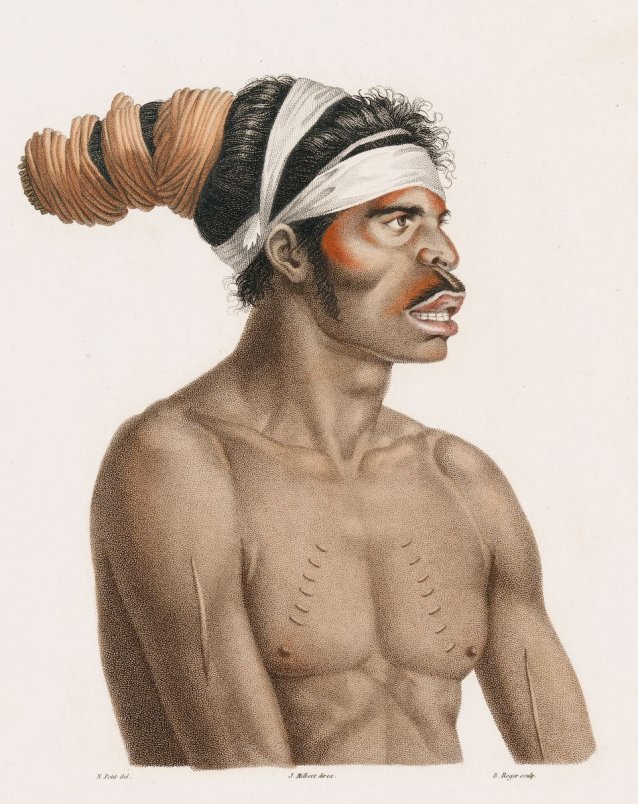
Cour-Rou-Bari-Gal, Voyage de découvertes aux terres australes: fait par ordre du gouvernement, sur les corvettes le Géographe, le Naturaliste, et la goëlette le Casuarina, pendant les années 1800, 1801, 1802, 1803, et 1804: historique, Péron et. al., 1807–17
Cour-Rou-Bari-Gal, Voyage de découvertes aux terres australes: fait par ordre du gouvernement, sur les corvettes le Géographe, le Naturaliste, et la goëlette le Casuarina, pendant les années 1800, 1801, 1802, 1803, et 1804: historique, Péron et. al., 1807–17
Both these items provide a fascinating glimpse into how Australia was seen by Japanese people in the late 19th century.
About this item:
circa 1860, ‘Sugoroku with the peoples of foreign lands = Ikoku jinbutsu sugoroku’.
Uchida M 1880, ‘Volume 12. Australia and the Pacific’ Yochi shiryaku, Uchida Masayoshi, Tokyo.
Sources:
Charton, Édouard 1860, Le Tour du Monde, Paris, Hachette.
Lydon, Jane 2016, Photography, Humanitarianism, Empire, London: Bloomsbury Academic.
Mackay, Alexander 1878, ‘Manual of modern geography, mathematical, physical, and political’, William Blackwood, pp 603–615.
Minamoto, S 1993, ‘The beginnings of modern geography in Japan: from the mid-nineteenth century to the 1910s’ in J Sargent & R Wiltshire, (eds), Geographical studies and Japan, Japan Library, Kent.
Péron, François et al. 1807–17, Voyage de découvertes aux terres australes: fait par ordre du gouvernement, sur les corvettes le Géographe, le Naturaliste, et la goëlette le Casuarina, pendant les années 1800, 1801, 1802, 1803, et 1804: historique, Paris : De l'Imprimerie Imperiale
Wikipedia 2021, ‘Masao Uchida’, Wikimedia Foundation.
Wilson, Edward 1859, Rambles Through The Antipodes: A Series Of Sketches Of Moreton Bay, New Zealand, The Murray River And South Australia, And The Overland Route, London : W.H. Smith and Son.
